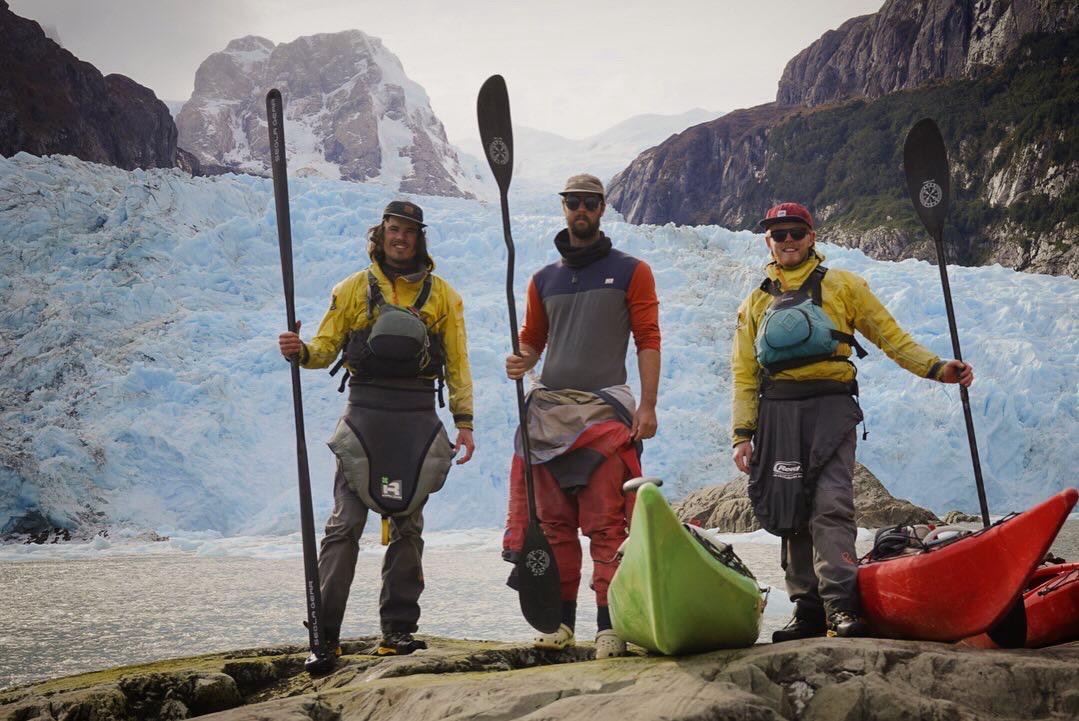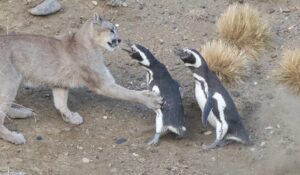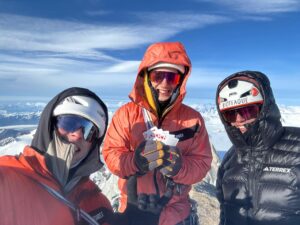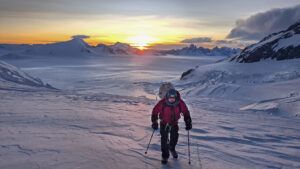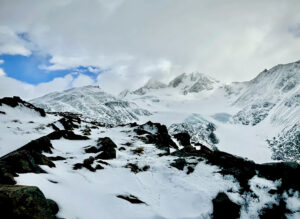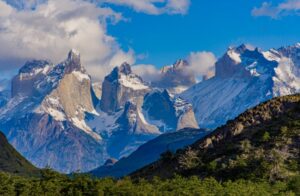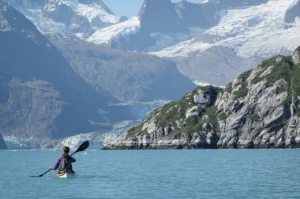Earlier this month, three kayakers completed a 32-day expedition through remote southern Patagonia. They covered nearly 900km of isolated fiords and rugged coastline.
Mathew Schweizer and Brody Duncan of New Zealand, along with Andy Gill of Scotland, began in Puerto Edén, a remote fishing village in the Magellanes region of Chile.
Before setting out, the group underwent an official gear inspection from the Chilean Navy.
“We had a naval inspection to check all our gear and get signed off… We needed to get permits from the Navy,” said Schweizer.
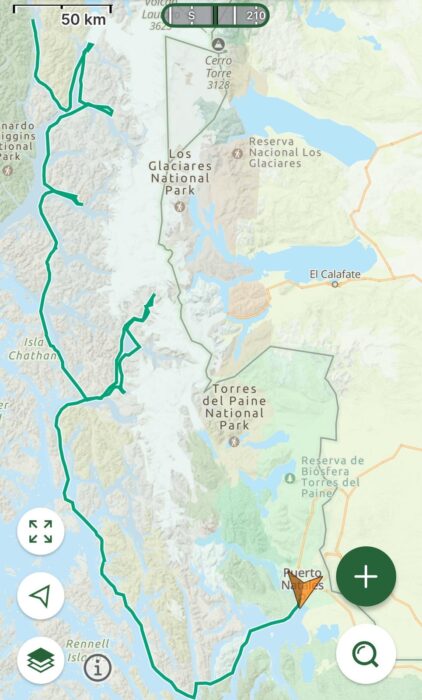
An outline of the route. Photo: Mathew Schweizer
South America’s largest glacier
Before heading south, the team paddled north from Puerto Edén to the Pio Xi, the largest glacier in South America.
“Absolutely huge, about five kilometers wide,” Schweizer noted.
They explored nearby fiords but had to turn back because of dense ice.
“The amount of ice that was coming out was just too much for us to paddle up into. Just big big ice pack.”
Their journey included an overland portage through a lake system.
“It was pretty hard work, unloading all the gear and hiking through some hard terrain, and then carrying kayaks up and over hills and into these lake systems,” Schweizer said.
Later, they entered Peel Fiord, a vast network of channels stretching roughly 70km. At its northern end lies Seno Andrew Fiord, which Schweizer described as a standout moment. “Just amazing. Four or five glaciers running straight down into Seno Andrew [Fiord].”
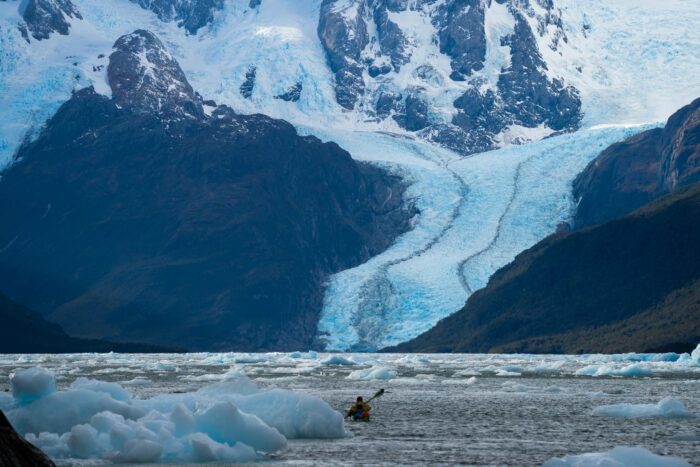
Seno Andrew Fiord. Photo: Mathew Schweizer
The coastal fiords of Patagonia, located in the Magallanes region of southern Chile, are among the most remote and least inhabited areas of South America. Known for challenging weather and dramatic glacial landscapes, the region is accessible only by boat or on foot.
Rough paddling weather
Adverse weather was a challenge throughout the 32-day trip.
“Probably four-and-a-half-foot waves,” Schweizer recalled of one particularly rough stretch.
The team also faced equipment failures. “Broken holes and tents, broken sleeping mats, well, my broken sleeping mat had fifteen or so puncture repairs on it. It just failed on me.” Strong winds also shredded their tarp.
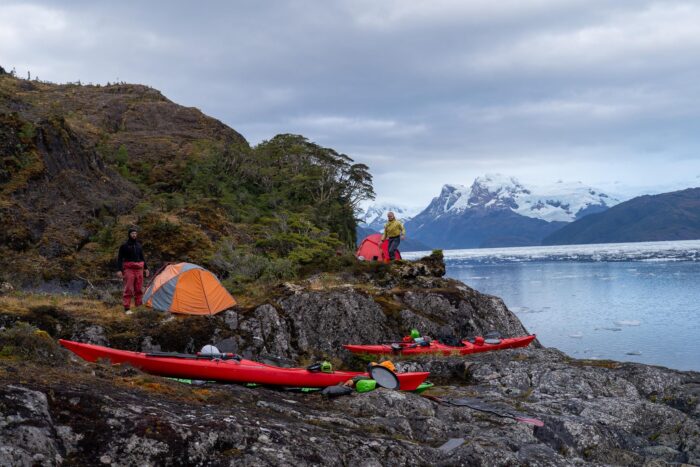
Camped for the night. Photo: Mathew Schweizer
In total, they covered 850 to 900km, and ended in Puerto Natales, a port city a few hours of Punta Arenas, the jumping off point for flights to Antarctica.
The isolation of the route demanded complete self-reliance.
“Once you start paddling from Puerto, you have no other villages, no other civilization to come across…There’s no help. There are no people out there,” said Schweizer.
